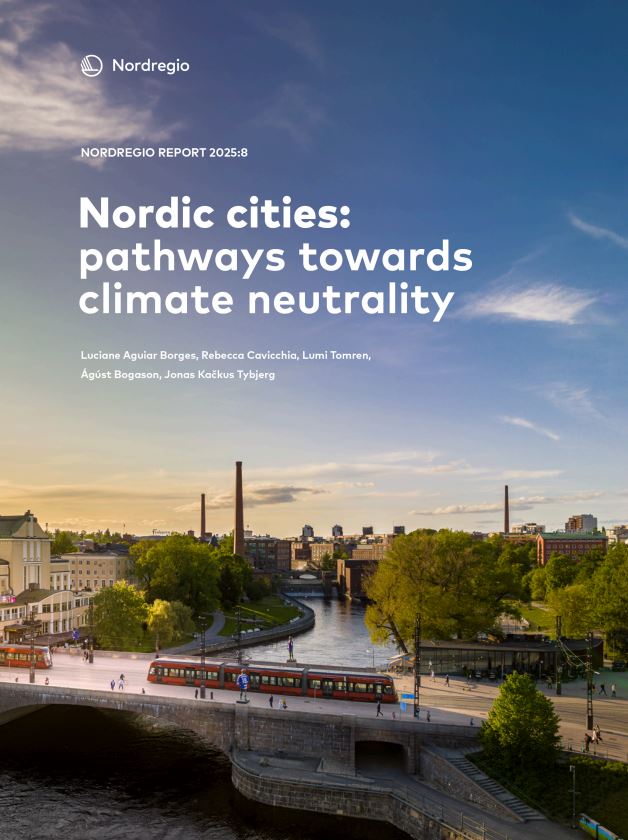This report offers new insights into the challenges, strengths and opportunities of Nordic cities in their climate efforts. It highlights future measures for local, regional and national governments to take. It is the culmination of the Nordic Climate Neutral Cities (NCNC) project, which examines how cities in the Nordic Region are striving to achieve climate neutrality through spatial planning.
Based on a multilevel governance approach and in-depth analysis of nine case studies – Aarhus and Vejle (Denmark), Tampere and Oulu (Finland), Reykjavík (Iceland), Trondheim and Kristiansand (Norway) and Lund and Växjö (Sweden) – the report provides new insights into governance challenges, financial constraints, regulatory barriers and spatial planning trade-offs. The report also highlights Nordic cities’ leadership, strong climate commitments and innovative local solutions. The findings underscore the need for improved governance coordination, stronger financial support and policy adjustments to accelerate climate action. While Nordic cities have demonstrated strong commitment to sustainability, they also often grapple with outdated national regulations that limit their ability to implement ambitious climate policies.
Key takeaways for action include:
- Strengthen multilevel governance: Enhance alignment between vertical and horizontal levels of governance to combat siloed thinking, reduce inefficiencies and ensure cohesive strategies for climate action.
- Prioritise public engagement: Future efforts should focus on engaging the public through targeted communication campaigns to raise awareness and inspire behavioural change. Helping citizens understand the benefits of sustainable choices can increase support for bold policies.
- Boost mobilisation for climate efforts: Strengthen climate networks and cross-sectoral collaboration to help local governments and stakeholders align their policies with climate ambitions, fostering a unified approach to sustainability.
- Expand taxation and regulatory frameworks: Introduce mechanisms to hold polluters accountable by implementing fees and regulatory instruments that reflect the true environmental cost of emissions. Such measures can generate revenues to fund sustainable projects while incentivising greener practices.
- Harmonise emissions calculations: Standardise emissions calculations across Nordic countries to ensure consistency, transparency and comparability in tracking progress. Such alignment will also foster cross-border collaboration, policy coherence and effective allocation of resources towards the goal of climate neutrality.
Overall, achieving climate neutrality will require Nordic cities to unite the efforts of diverse stakeholders, align frameworks and incentives with a shared vision, address knowledge gaps and collaborate closely with other levels of government.











